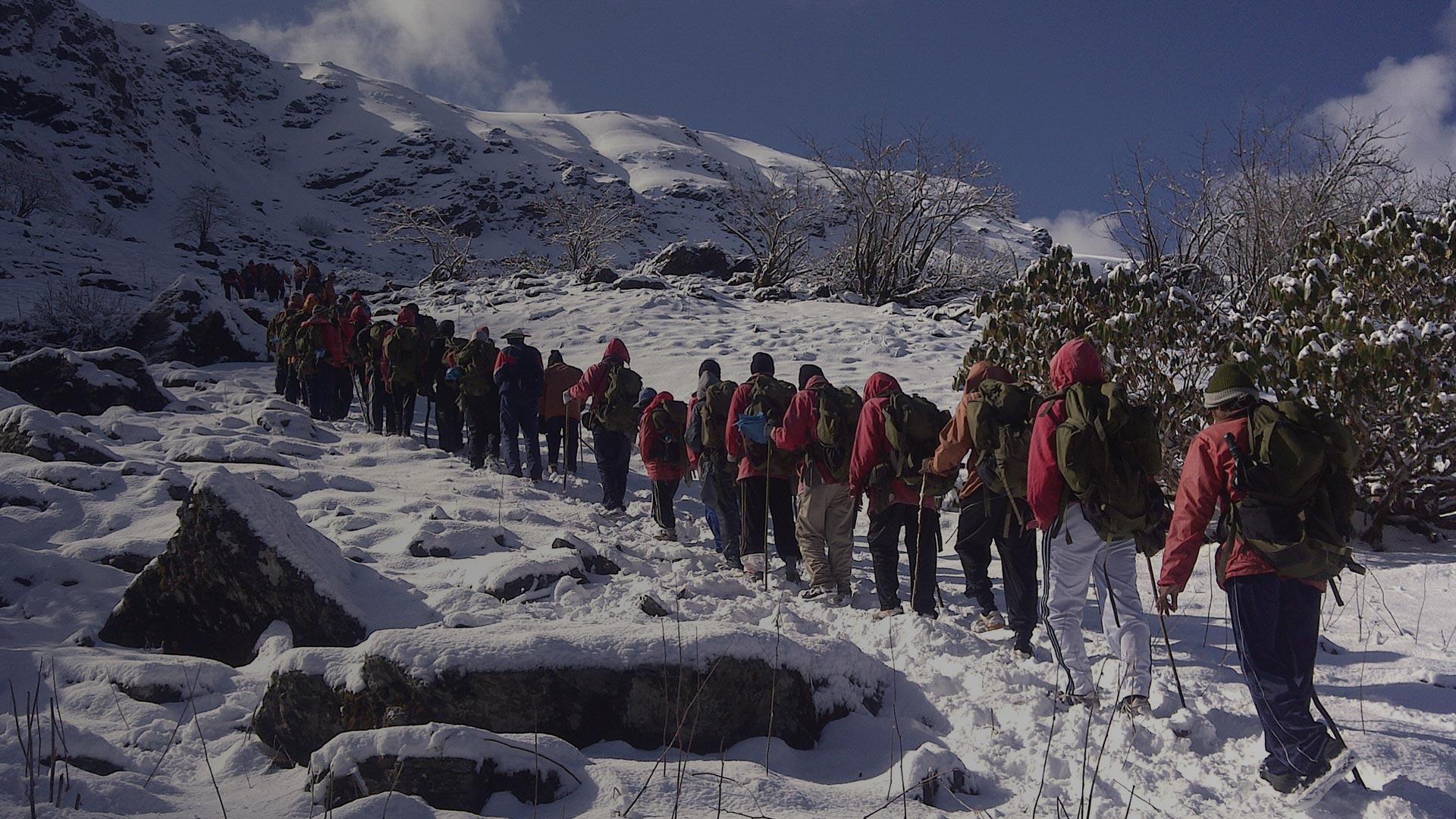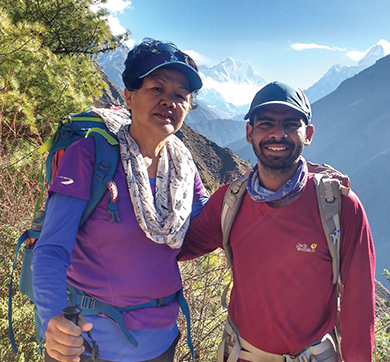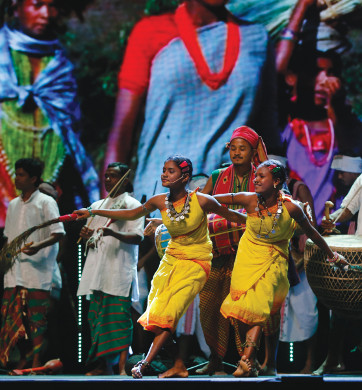1953 words | 7-minute read
Edmund Hillary, who along with Sherpa Tenzing Norgay, was the first to climb Mount Everest on May 29, 1953, had earlier attempted the feat as part of a British reconnaissance expedition in 1951. That attempt failed, and Hillary made a promise to himself and to the formidable peak at that time. He said, “I will come again and conquer you because as a mountain, you can’t grow… but as a human, I can.”
It is a statement that epitomises the spirit of the Tata Steel Adventure Foundation (TSAF), an outdoor leadership institute with a team led by Bachendri Pal, the first Indian woman to climb Mount Everest in 1984.
The activities organised by TSAF are designed to promote leadership skills through adventure-filled experiences. TSAF organises special programmes in Uttarakhand (in Uttarkashi), and Odisha and Jharkhand (in Jamshedpur), in India, to enable people to beat the limitations they face as they seek to become stronger individuals.
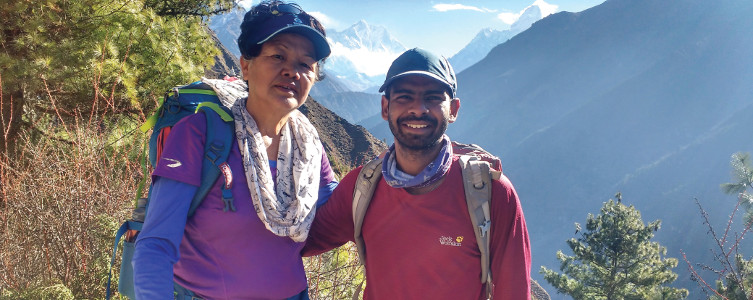
Sunil Bhaskaran, vice president, corporate services, Tata Steel, says, “It is definitely an experience of a lifetime.” Mr Bhaskaran has personally experienced the adventure-based activities, first as a trainee, and more recently, with his wife and daughter, when they attended a special six-day programme for senior officers and their families. He has also taken his team to experience the programme.
Birth Of An Adventure
When Ms Pal returned after her momentous achievement, she received letters of congratulations and invitations to “work with us” from several organisations. But it was Tata Steel that she opted to stay with, disregarding the plethora of opportunities that had opened up.
She says, “Tata Steel supported me when I was nothing. The company employed me in the sports department in December 1983. I was selected to be in the team that would scale Mount Everest, but being in the team is no guarantee that you will be able to reach the top. I never forgot that gesture. My parents taught me to appreciate those that reach out to help us when we have done nothing to deserve that help. I took their advice to heart.”
A day after joining Tata Steel, Ms Pal left for the Mount Everest training camp, and from there onto the peak. She carried with her the Tata flag, given to her by Tata Steel. Exactly five months after joining the company, on May 23, 1984, she stood on the summit of Mount Everest, unfurling the Indian tricolour and the Tata flags.
On returning to Jamshedpur, Ms Pal was felicitated by Russi Mody, the then chairman and managing director of Tata Steel; at the function, he announced the setting up of a full-fledged department called the Tata Youth Adventure Centre, to be managed by Ms Pal. That centre was the precursor to TSAF.
Ms Pal says, “I didn’t even know how to make a budget then. In India, the idea of adventure sports had not yet caught on. How could I explain to people what they would gain by climbing a mountain? It had been just a few years since I had climbed Mt Everest.” Ms Pal likens the opportunity she was offered to feeling “as if I had gone from one Mount Everest to another.”
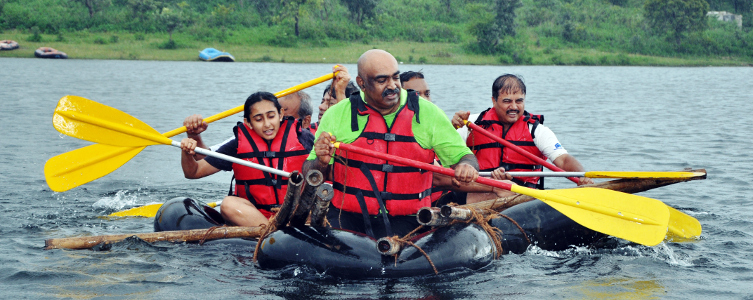
Learning While Growing
There was much to be learned, and Ms Pal proved to be a determined and eager learner. She took advantage of all the opportunities offered to her. On foreign trips, she would visit local mountaineering groups. She attended a three-month train-the-trainers course at the Sir Edmund Hillary Outdoor Pursuits Centre in New Zealand. TSAF also invited trainers from America to train its people. These trainers added great value to the programme, and helped Ms Pal to craft a programme that would suit the needs of the company.
These learning programmes strengthened her convictions and helped her work out ways in which adventure could be used as a tool to achieve bigger goals. Finally, she had an answer to concerns about risks and hazards on an adventure trip. She says, “Risk is everywhere. When you face risk, you learn and you grow. We need to learn to get out of our comfort zones. There is so much we can learn from nature and from the community. Nature’s classrooms are truly stunning.”
Expanding Movement
Initially, the ‘outdoor leadership course’ was made compulsory for graduate engineer trainees. Ms Pal would lead teams up the Uttarkashi mountains for 14 days. Back then, it was more of an enjoyable orientation. Later, the team decided to focus on the seven skills of leadership: competence, communication, judgement and decision making, tolerance for adversity and uncertainty, self-awareness, vision and action.
Ms Pal says, “There are many ways to learn about leadership, but how do you learn to be a leader? We believe that adventures and expeditions call for skills that can help whether you’re climbing Everest or starting a new business. It’s a formula that applies to the wilderness and to life.”
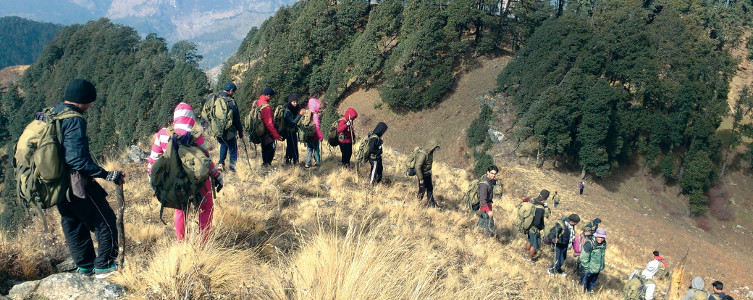
The team at TSAF fine-tuned its curriculum, designing adventures and experiences that would teach participants the value of building the people around them, encouraging teamwork, reacting appropriately to different people and situations, developing self and peer leadership skills, being a good follower, and so on.
Participants learn the value of planning before execution, the traits of a good leader, how to communicate a message to one’s teammates properly, how to nurture a positive attitude and deal with change and uncertainty, the significance of strong interpersonal relationships, the importance of time management and flexibility in order to manage limited resources, etc. The beauty of the programme is that many of the most valuable lessons are not even taught in a classroom setting. They are imbibed by individuals through their experiences.
The whole idea is to teach valuable survival skills and underscore the importance of physical effort, while helping participants recharge their batteries, release stress and overcome their fears. Working in teams helps them appreciate the value of each person. Being amidst nature helps them realise that nature recognises neither designation nor social status. The packaging of the entire programme in a fun and adventure setting helps people engage better.
Today all Tata Steel management and commercial trainees have to take the programme. Special programmes have also been devised for some levels of lateral hires. Attending these programmes together creates a great sense of bonding, emerging out of shared experiences, that helps build stronger teams as employees ease into their work roles.
Greater Focus
At TSAF, the initial one-woman team of Ms Pal grew when PP Kapadia, manager, adventure programmes, came on board. Later, they were joined by Hemant Gupta, a metallurgical engineer from IIT Bombay, who had joined Tata Steel as a management trainee in 2011. Mr Gupta moved to TSAF in 2013 to follow his passion for the outdoors and mountaineering.
Subsequently, Mr Gupta attended National Outdoor Leadership School in the US where he learned valuable lessons on ways to connect adventurous experiences with leadership development. On May 27, 2017, he scaled Mount Everest. Mr Gupta will be playing a greater role in developing TSAF as an institute for leadership through the outdoors. Armed with Mr Gupta’s learning, TSAF was now ready to expand the size and scope of its offerings.
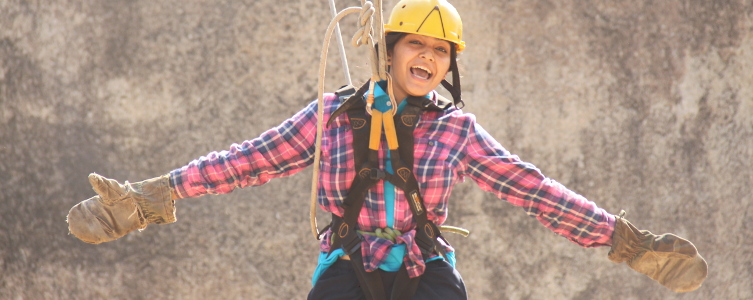
Since TSAF is a nonprofit dedicated to leadership development in Tata Steel, the company felt the need to establish another organisation — the School of Outdoor Leadership (SOL) — that could offer its services to other companies.
The setting up of SOL will help TSAF to create more capacity. It will offer participants better experiences, building on TSAF’s existing infrastructure to cater to larger numbers of people. Those seeking TSAF’s services were often turned away for lack of bandwidth. The revenues that SOL earns will be ploughed back into creating better infrastructure and equipment.
The team has planned three levels of programmes for employees, based on the hierarchy in organisations. These levels cater to entry-level officers, junior and middle-level executives, and senior-level executives.
No Frills, All Thrills
When participants pack their gear for the programme, they must remember to carry patience and excitement. An experience of a lifetime awaits them, though initially they do not see it that way, focused as they are on the thought of having to make do without many of the luxuries urban people take for granted. The idea is to look deep within and discover the reserves of strength and ability within themselves.
The agenda for each day includes activities such as rock climbing, river rafting, rappelling, trekking, etc. Participants sleep in tents and wash dishes throughout their stay. They also cook food during the last five days. The camp is no picnic; strict dos and don’ts prescribe the right conduct that will help participants get the best out of the camp.
Participants are divided into groups to enable better interaction and foster team spirit. Working in teams, they learn to delegate and do various chores. The experience of trekking up the mountain teaches them the value of minimalism, by carrying only what one needs, and to rely on one another to get through difficult situations.
Mr Bhaskaran says, “Ms Pal and her team inspire and push us to fight our own limitations. At the end of it, when you return home, you come back with a sense of having achieved something. Nothing can take that feeling away from you.”
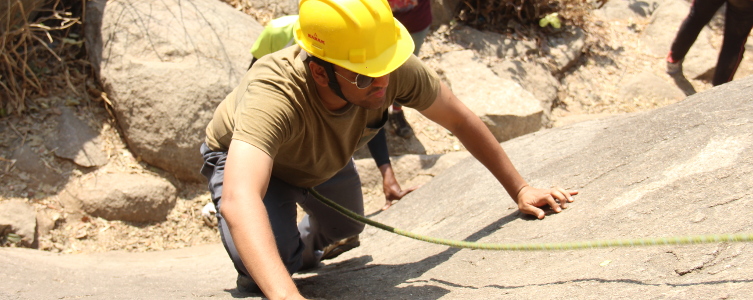
Leaders In The Wild
The village of Tumung, on the outskirts of Jamshedpur, Jharkhand, is the perfect setting for Tata Steel Adventure Foundation’s (TSAF) camp. Participants are thrilled with the scenic beauty of the location, the large boulders that dot the landscape, the lush fields, the caves and the lake.
But this is not a pleasure trip. These picture-postcard surroundings form the backdrop for some of TSAF’s leadership development programmes. Participants follow a strict schedule at the camp: wake-up at 5am, followed by an hour’s physical exercise, training programmes, vegetarian meals, and lights off at 9pm.
The hours between wake-up and bedtime are crammed with well-designed games and activities such as obstacle races, trolley rides, rope crossing, rope ladder climbing, crawling, passing through tyres, monkey crawling, crossing through a small cave and the Tarzan swing. These activities are designed to help individuals think as a team, and think laterally in order to solve problems. Participants return to their camps in the evening, tired yet eager for more.
Discovering Oneself
According to Mr Bhaskaran, people start showing their true colours when they face physical stress. He says, “When I underwent the programme as a new joinee 30 years ago, many of us thought we were going through the worst days of our lives. It was only later that we realised that those were some of the best times of our lives.”
Under Ms Pal’s able and inspiring leadership, individuals learn to fight their limitations, to grow their capabilities and to recognise the importance of collaborating with companions during the journey.
She says, “Over the years, TSAF has trained and motivated seven people to climb Mount Everest. It has also helped thousands of others to climb their own Everests through the Outdoor Leadership Development Programme.”
Australian mountaineer, author and filmmaker Greg Child had once said, “Somewhere between the bottom of the climb and the summit is the answer to the mystery of why we climb.” Thousands of physically exhausted yet thoroughly rejuvenated people will testify to the joy of discovering the answer to that mystery, with more than a little help from TSAF.
—Cynthia Rodrigues




